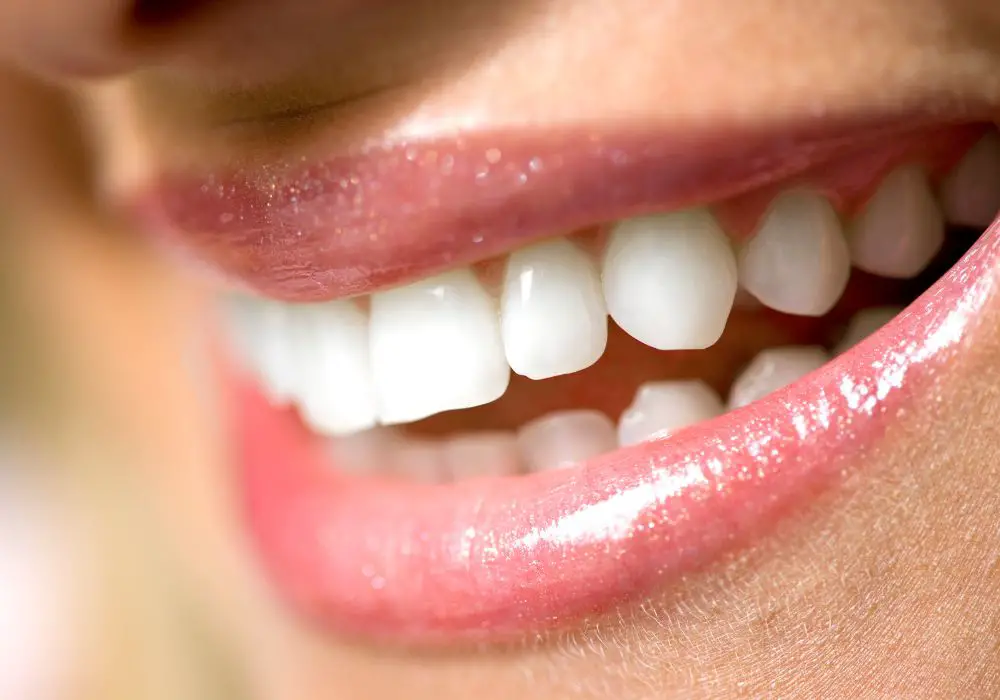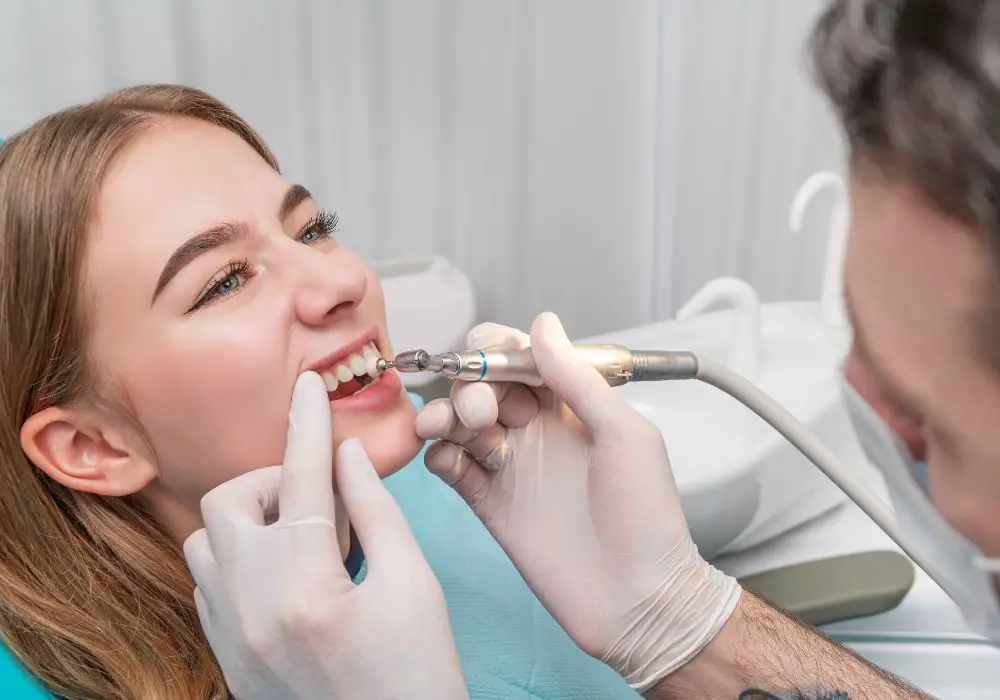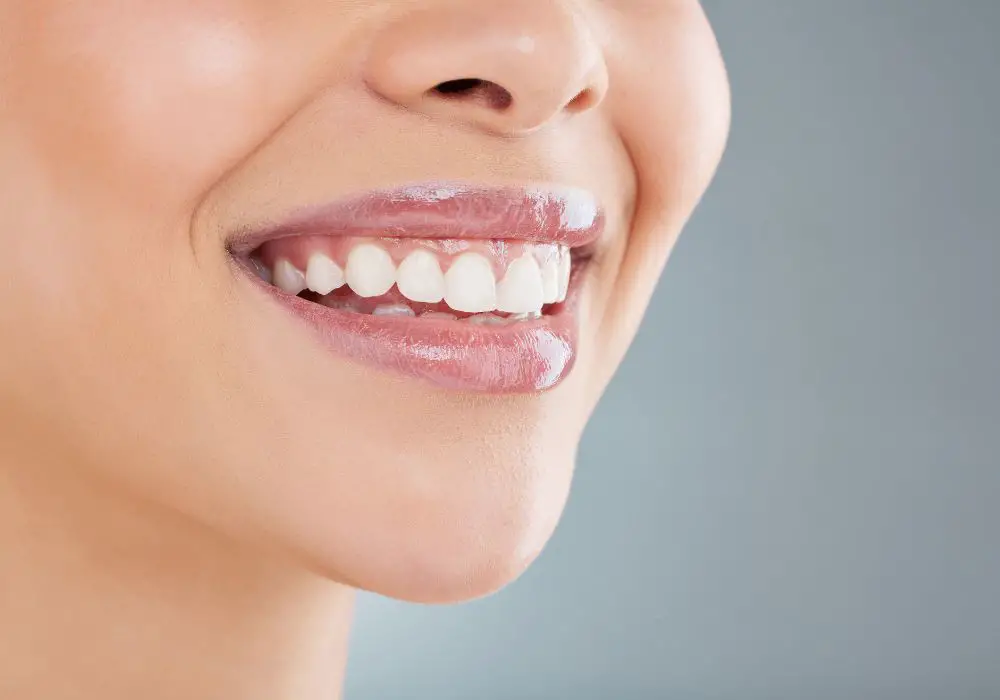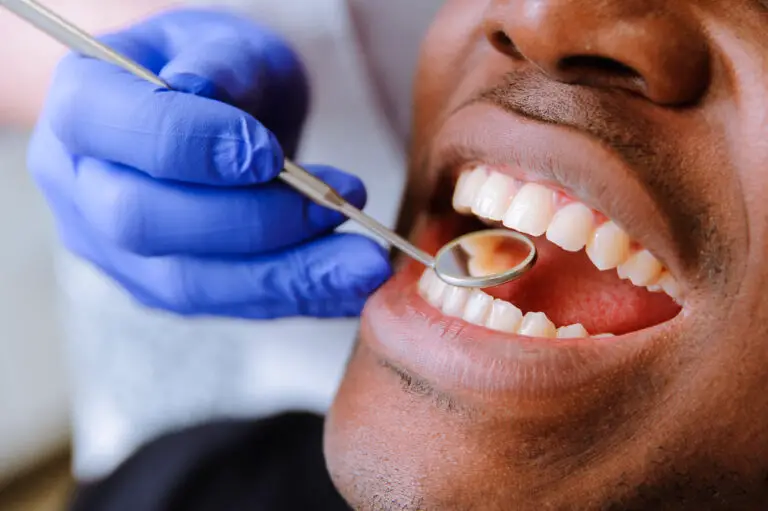Having sharp teeth can be unpleasant and lead to issues like cutting your tongue or cheek. Fortunately, there are several effective options to dull down and smooth sharp edges on teeth. This article will discuss the common causes of pointed teeth and go in-depth on both temporary and permanent solutions.
What leads to sharp tooth edges?
Our teeth naturally have some unevenness and ridges that can be felt by the tongue. But certain factors make some people’s teeth feel abnormally sharp and jagged.
Genetic structure
The natural shape and structure of our teeth is largely determined by genetics. Many hereditary conditions can alter the size, spacing and alignment of teeth in ways that increase sharpness. For example:
- Microdontia – Having smaller than average teeth, which can feel sharper due to greater enamel thickness relative to size.
- Macrodontia – Larger teeth dimensions can lead to greater overlap and unevenness between teeth.
- Supernumary teeth – Extra teeth crowding the mouth can push other teeth out of alignment.
- Severe malocclusion – An overbite or underbite causes the upper and lower teeth to extend beyond their natural position.
Enamel issues
The outer enamel layer normally protects the softer, more sensitive dentin underneath. But when enamel wears down or decays, it leaves exposed dentin near the gum line that feels sharp. Some causes include:
- Acid erosion from gastric reflux or bulimia
- Grinding or bruxism over time
- Past trauma that chipped the enamel
- Untreated dental cavities
Bone loss
Loss of bone around the teeth can lead to increased looseness. This causes teeth to shift and sometimes overlap each other in irregular ways that create sharp areas.
Missing teeth
When teeth are lost and gaps form, the remaining teeth can drift and tilt into the empty space. This reduces support for surrounding teeth.
Crowded teeth
When the jawbone is too narrow, there isn’t enough space for all the teeth. They become crooked, rotated and overlapped. Malocclusion and crowding makes teeth feel uneven.
Problems caused by sharp teeth

While not typically harmful, sharp teeth can negatively impact comfort and function. Some issues associated with sharp teeth include:
- Difficulty chewing certain foods comfortably
- Accidentally biting the tongue, lip or cheek
- Increased risk of trauma and infection in the mouth
- Speech impairment
- Tooth wear from grinding
- Damage to dental work like crowns or veneers
- Increased tension headache and TMJ symptoms
- Self-consciousness about smile appearance
Temporary methods for dulling sharp teeth
Some conservative methods can provide temporary smoothing of sharp edges. However, these are shorter term solutions that require repeated applications.
Dental polishing
Your dentist or hygienist can polish and buff teeth to contour any rough spots and make them smoother. But because polishing only affects the surface layer, results diminish quickly. It may need re-done every 3-6 months.
Toothpaste/gel abrasives
Over-the-counter pastes for sensitive teeth contain additional polishing and abrasive ingredients that can wear sharp areas down over time with twice daily brushing. This gradually evens out the microscopic ridges on enamel. However, these specialized toothpastes are more expensive.
Reshaping strips
Small dental strips coated in an enamel-safe abrasive are available to manually file down specific sharp spots as needed. But strips only smooth a limited area, not whole teeth. They may temporarily contour but not alter alignment or overlap issues.
Acid treatments
Applying a very weak acid like dilute phosphoric acid can slowly dissolve and weaken enamel. This makes it easier to chip off the sharp area with an emery board. However, acids carry risks of permanently thinning and damaging enamel. Proper isolation and limiting treatment time is critical.
Permanent treatment options

For lasting relief from sharp teeth, visiting a dentist is recommended. There are several effective and conservative permanent treatments.
Tooth reshaping
Also called odontoplasty or contouring, this removes sharp edges using dental drill bits to re-sculpt the shape of teeth. Local anesthesia keeps the process pain-free. Smoothing and rounding the edges camouflages unevenness. It’s a cost-effective way to improve function and appearance without orthodontics. The dentist can carefully remove enamel in all needed areas with precision.
Tooth reshaping pros and cons:
Pros:
- Permanent solution
- No dental materials needed
- Smooths all edges and angles
Cons:
- May require multiple visits
- Small risk of pulp exposure
- Can’t lengthen short teeth
Dental bonding
Bonding applies a putty-like composite resin to the surface of teeth. The dentist sculpts sharp edges into more rounded contours before hardening the resin with curing light. The material bonds to the underlying enamel for seamless blending.
Dental bonding pros and cons:
Pros:
- Fast results in one visit
- No reshaping or anaesthesia
- Cost-effective
- Can make teeth look longer
Cons:
- Less durable than other options
- May need replacing every 5-7 years
- More prone to staining over time
Dental veneers
Veneers are thin porcelain or resin shells made to cover the front surface of teeth. They mask flaws and camouflage unevenness by creating uniform tooth dimensions. Veneers last many years but involve some removal of natural enamel.
Pros:
- Look very natural
- Resist staining
- Long lasting 10-15 years
Cons:
- More expensive
- Require multiple visits
- Irreversible enamel removal
Orthodontic treatment
Braces and clear aligner trays can permanently realign and straighten crooked, crowded teeth. This evens out sharp overlapping areas. But orthodontics requires wearing appliances for 12-24 months on average.
Maintaining a smooth smile

To keep your teeth smooth long-term after treatment:
- Get regular dental cleanings and exams
- Brush and floss thoroughly twice a day
- Avoid grinding, clenching and chewing on hard items
- Wear a nightguard if you grind your teeth
- Limit acidic or sugary foods and drinks
- Get dental work adjusted promptly if sharp edges return
With proper oral hygiene and care, fixed sharp teeth can stay smooth permanently. But some periodic dental maintenance may be needed down the road.
Frequently Asked Questions
What’s the quickest fix for sharp teeth?
Having your dentist polish and contour your teeth is the fastest way to smooth sharp edges and points. While not permanent, it offers immediate improvement in just a single office visit.
How should I prepare for dental bonding?
No major preparation is required. But you may wish to whiten your teeth first for uniform bonding color. Avoid coffee, tea and red wine prior as staining could discolor the bonding material. Your dentist will likely have you select a composite shade to best match your natural teeth.
Can I get dental veneers on only my top or bottom teeth?
Yes, veneers can be done on just the top or bottom teeth. Keep in mind the final cost is affected by how many individual veneers are needed. Talk to your dentist about whether completing just one arch will achieve your goals.
What’s the average cost to fix sharp teeth?
Costs vary based on your specific treatment plan. Dental polishing is the most affordable at $100-200 per session. Bonding costs $200-500 per tooth, while porcelain veneers range $1000-2500 per tooth. Orthodontics averages $4000-7000 in total fees.
Will my dental insurance cover sharp teeth treatments?
Cosmetic procedures like veneers, bonding and reshaping often aren’t covered by insurance. But plans may partially cover orthodontics. Check your policy details. Third party financing can make sharp teeth treatments more budget-friendly.







